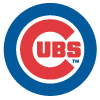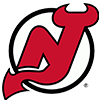SAMPLE SIZE
Am I the only one who gets tired of these type of questions?
Should I drop Ryan Vogelsong after he allowed eight runs?
He's allowed more than three runs three times in 22 starts this year.
Should I drop Michael Fiers after he allowed eight runs?
He has allowed six runs in his previous nine outings.
What's wrong with Carlos Gonzalez who is hitting .189 in August?
I guess that .315-28-110-15-26 pace isn't good enough for you?
Manny Machado has looked great. Should I drop Asdrubal Cabrera to add him?
Good luck with that.
I get the feeling that the fantasy football mentality is infecting fantasy baseball. By that I mean people are looking at one week of games and thinking they can discern patterns that, frankly, just don't exist. Baseball is a 162-game season. It's a long time. Every player will have a period where they stink. There's no way around that. It's just the way that it is. If you're going to panic at a 2-for-21 streak by a batter, or a three outing run in which a pitcher has a 7.71 ERA, then you should go play fantasy football because you are never going to make it through 162 games. Fantasy baseball requires a steady hand and patience to be successful long term. Now I'm not saying you turn a blind eye to trends. I guess the real question though is when is a "trend" established as a new baseline. Let's take the case of
SAMPLE SIZE
Am I the only one who gets tired of these type of questions?
Should I drop Ryan Vogelsong after he allowed eight runs?
He's allowed more than three runs three times in 22 starts this year.
Should I drop Michael Fiers after he allowed eight runs?
He has allowed six runs in his previous nine outings.
What's wrong with Carlos Gonzalez who is hitting .189 in August?
I guess that .315-28-110-15-26 pace isn't good enough for you?
Manny Machado has looked great. Should I drop Asdrubal Cabrera to add him?
Good luck with that.
I get the feeling that the fantasy football mentality is infecting fantasy baseball. By that I mean people are looking at one week of games and thinking they can discern patterns that, frankly, just don't exist. Baseball is a 162-game season. It's a long time. Every player will have a period where they stink. There's no way around that. It's just the way that it is. If you're going to panic at a 2-for-21 streak by a batter, or a three outing run in which a pitcher has a 7.71 ERA, then you should go play fantasy football because you are never going to make it through 162 games. Fantasy baseball requires a steady hand and patience to be successful long term. Now I'm not saying you turn a blind eye to trends. I guess the real question though is when is a "trend" established as a new baseline. Let's take the case of Jason Kipnis.
At the end of June Kipnis had appeared in 75 games was hitting .275, has 11 homers, 46 RBI, 47 runs scored and 19 steals. Double those totals and we're talking about a 20/30 season with 90 RBI/Runs, and that would make any player, let alone a second sacker, an elite fantasy performer. I warned people that Kipnis had never performed at those levels at any point during his minor league career. I pointed out that Kipnis had averaged, per 150 games in the minors, 17 homers and 14 steals. No one listened. They somehow thought that Kipnis was just going to take a massive leap in his development far surpassing anything he had done in the minors even though he had only 92 games above Double-A entering the 2012 season (not counting the 36 games he appeared with the Indians last season). Was the sample size too small to make any definitive proclamation with Kipnis? Was the "trend" truly a trend or a fad?
If you've been paying attention you know the answer to those questions. Kipnis has tanked over his last 31 games, and I mean he's performing in a manner that wouldn't look out of the ordinary if he was Clint Barmes, and that's clearly awful. In 31 games Kipnis has hit .214. He hasn't gone deep one time and his SLG, not his average or OBP but his slugging percentage, is .277. He's also stolen a mere four bags. Is Kipnis this bad? No. Was he that good? No. is he the player we've seen overall? Quite possibly. Kipnis is hitting .259 overall, and given his skills that's not crazy low. His OBP is .334. Again, commiserate with his skills. That massive HR/F ratio that was 20 percent last year and over that amount after two months this season has, as predicted, regressed to 10.1 percent.
Look, I can't tell the future even though I am called The Oracle. I'm also not even close to being right all the time (hello Mike Trout). At the same time I'm right more often than I'm wrong. Why? Because I remove emotion from my analysis and I, shockingly, actually analyze the situations for what they are. Take the case of Kipnis. We have a guy who was over-performing early in the year, especially in the homer column. I warned people, repeatedly, that he wasn't gonna keep up his early pace, and I was repeatedly called an idiot for taking that position. We've now seen him go more than the length of an entire high school baseball season without hitting one into the seats. It's just logic folks. So everyone would benefit from pulling back from the madness, stop listening to what a guy's coach says or that that anchor on ESPN is bloviating about. Analyze the player for who he is. Be honest about the skill set. Look at more than three weeks of data. Put all of that together before you think that some 26 game run of excellence, or failure, tells you everything you need to know about a player because, in nearly every case (at least for batters), it's not nearly enough data to come to a definitive conclusion.
BY THE NUMBERS
0.02: The difference between the career (1.30) and season (1.32) WHIP for the Brewers' Yovani Gallardo. That's not where the similarity ends either. For his career he has a 3.65 ERA. This year it's 3.78. For his career he has a 2.65 K/BB ratio. This year it's 2.50. For his career he has a .292 BABIP. This year it's .296.
0.33: The difference between the home (2.26) and road (2.59) ERA of the Reds' Johnny Cueto in 2012. That difference shrinks even more if we compare his first half ERA (2.39) with his work in the second (2.61) for a difference of 0.22. If you were a hitter you'd also hope to avoiding him in the day when he does his best Christy Mathewson impression with a 1.55 ERA in 12 starts (that number is double at 3.36 at night).
.462: The batting average of Buster Posey in the month of August, the best mark in baseball. That should hardly come as a shock though. Going back even further than two week to four, we find a Posey who is hitting .444 with 29 RBIs. Going back a wee bit more Posey is hitting .407 with 36 RBIs over his last 35 games. Yowzah's. The guy is up to .332 this season and is showing no signs, at all, of slowing down.
3: The number of times this season that John Lester has struck out nine batters including a season best 12 the last time he took the hill Sunday. On the year he has a total of three 9-K games which seems a bit low for a pitcher who has averaged 211 Ks the past three years. Here are the total number of games in which he has struck out nine or more batters the past three years: 2011 (three), 2010 (ten) and 2009 (ten).
7: The longest active winning streak in baseball. One of the two men at that level is one you might figure, David Price who is tied for the major league lead with 15 wins. The other, you'll never guess. Kevin Correia, yeah the righty of the Pirates who has found it hard to get a starting spot every five games, has also won 7-straight decisions for the Buccos. On the year he is 9-6 and even with the success he's still posted a 4.56 ERA during the run of wins.
11: The current hitting streak of Josh Hamilton (his season long streak was 16 games from April 27th through May 16th). During that stretch he has hit .356 with 15 RBI and he's been even hotter of late hitting .476 with three homers and nine RBI in his last six games. Even with all his up and down work this season Hamilton is still tied for the major league lead with 99 RBI and he's second to Adam Dunn in homers with 32 (Dunn has 33).
57.0: The percentage of the last 79 batters that Aroldis Chapman has faced that have struck out. Think about that. Forty-five of the last 79 batters he has faced haven't been able to put the bat on the ball. During that 21.1 inning streak he's allowed only nine hits and three walks as he's converted 20-straight save chances one behind the longest active streak in baseball (Joe Nathan, Fernando Rodney and Huston Street). Furthermore only once in his 53 appearances did he fail to record a strikeout, he's struck out two or more batters 37 times and nine times he's struck out the side.
67.2: The innings pitched increase for Chris Sale this season as he's up to 138.2 innings after throwing 71 innings last season. With all this talk of innings pitched and pitch counts, not to mention the fact that Sale has had two periods of dead arm this year (remember he was sent to the bullpen at one point and he recent went a week an a half between starts), the White Sox have said they do not have an artificial innings count for Sale. Still, you have to wonder if that is wise. Not only has Sale already surpassed his total from last season by 67.2 innings but he threw only 71 innings last season. Is it really wise to let a young arm more than double his previous seasons innings total? We're about to find out with Sale.
336.1: The innings pitched total of Chris Capuano since the start of last season. Why is that something to get excited about or even waste your time considering it? How about because from 2007-10, that's four years folks, he threw 264.2 innings. After he allowed 11 runs in two starts at the end of July, the skill was falling for many in regards to expectations with Capuano. Consider those concerns, at least partially, waylaid. Chris has allowed just two runs in 15 innings over his last two outings as he has also struck out 16 batters leaving him with pristine numbers (11 wins, 3.11 ERA, 1.20 WHIP, 135 Ks) this season for a guy who was a reserve round pick in many a mixed league.
Ray Flowers can be heard daily on Sirius/XM Radio on The Fantasy Drive on Sirius 210 and XM 87 from 7-10 PM EDT, Monday through Friday. Ray's baseball analysis can be found at BaseballGuys.com and his minute to minute musings can be located at the BaseballGuys' Twitter account.




























